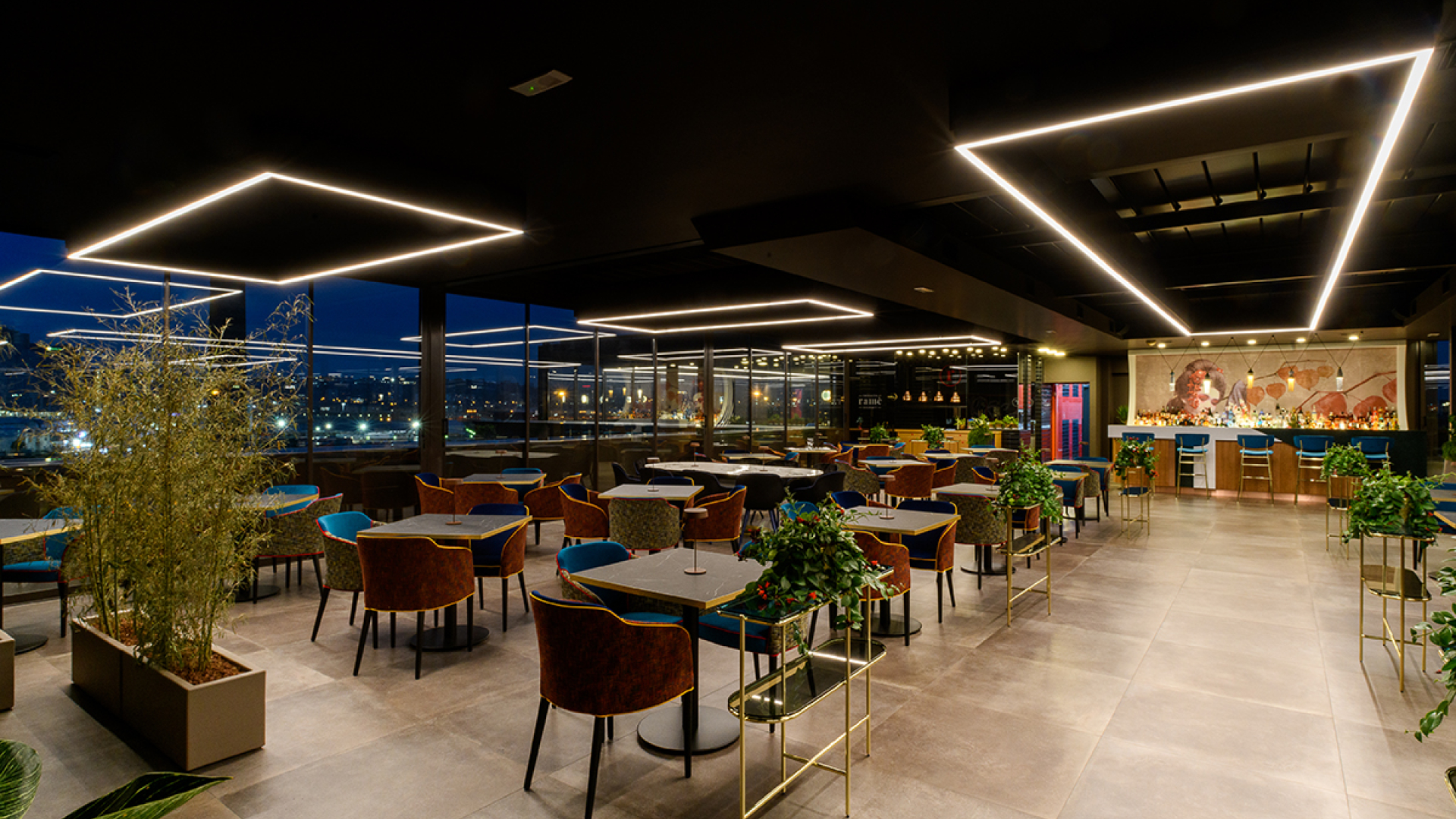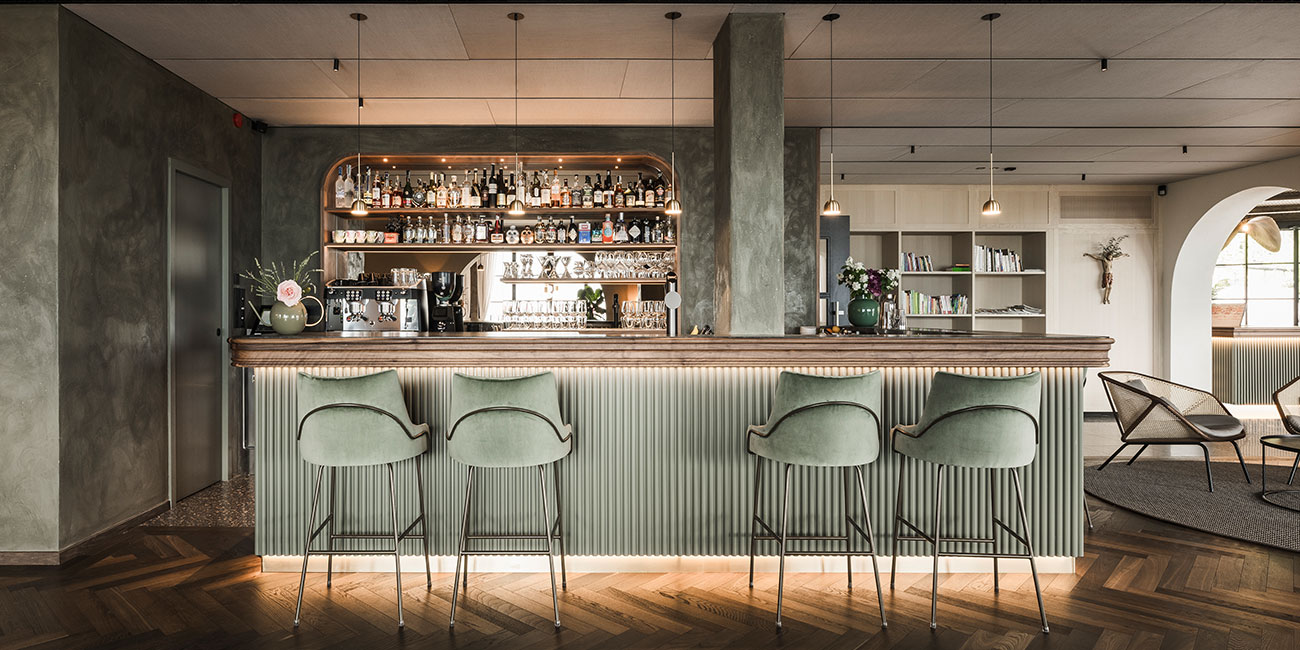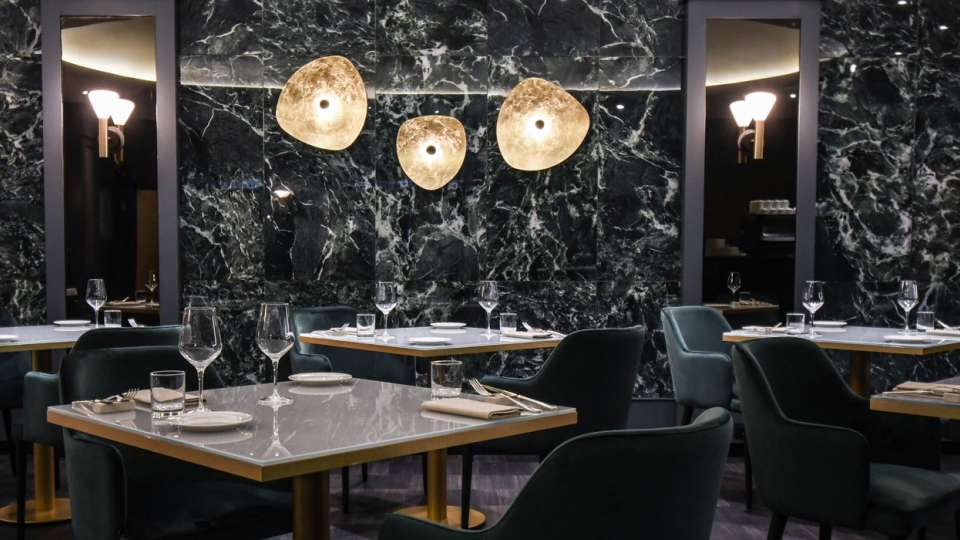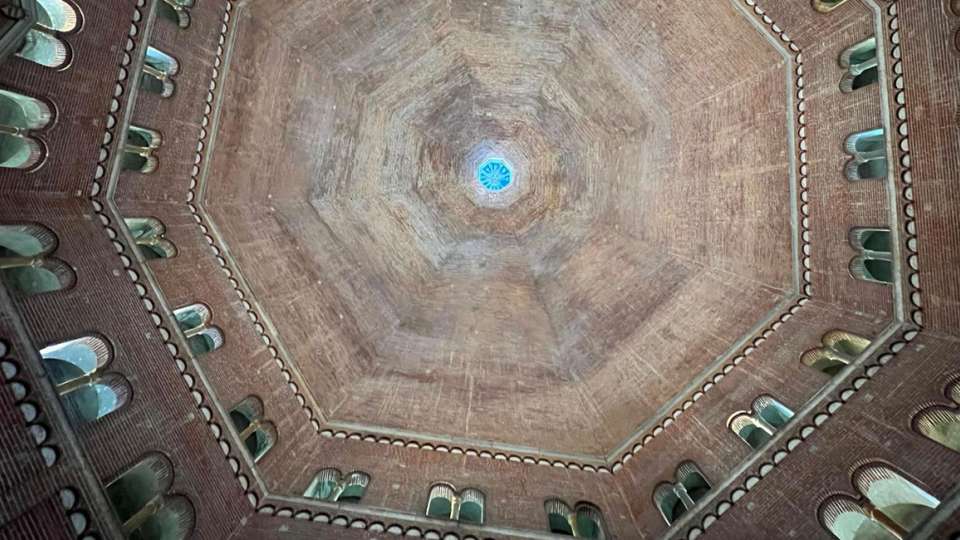
Lighting in a restaurant adds style to the ambiance and plays a role in the customer experience. Various studies show that appropriate lighting increases dwell time, appetite, and inclination to consume food and drink.
Meticulously arranging the light sources benefits the optimization of every element in the restaurant, emphasizing its specific activity and identity.
First, it's essential to determine whether the restaurant primarily operates during the day or evening. Subsequently, chosen light sources should suit the overall lighting scheme. Lighting calibration of angle and intensity aids in directing light to specific details and areas of the restaurant, highlighting the elements that require emphasis.
There are generally three types of restaurant lighting subdivided according to their functions.
Ambient lighting: The primary source establishes the ambiance's mood, typically achieved through ceiling, recessed, or pendant lights.
Task and Functional lighting: This category includes all light sources that help customers and staff to perform actions. Lights that illuminate tables help customers read the menu and see the food clearly, making their dining experience more enjoyable. Kitchen or counter lights are essential for the staff to prepare drinks and dishes efficiently. It's all about creating a comfortable and functional environment for customers and employees.
Functional lights include those that mark corridors or entrances.
Accent lighting: A type of illumination that can highlight specific interior or outdoor details in a more decorative way than a functional one. Its purpose is to accentuate certain features such as pictures, niches, signs, hanging menus, or outdoor elements.
Lighting in restaurants has two important functions: practical and decorative.
On the one hand, customers must be able to find their way around the restaurant easily. To achieve this, ambient, functional, and accent lighting must work in unison to create contrasts of brightness that can draw attention to specific areas of the restaurant.
However, lighting also plays a role in defining the atmosphere and style of the restaurant. When designing restaurant lighting, consider the clientele, aura, and food served to create a cohesive and enjoyable dining experience.
High and intense lighting keeps customers engaged, while warm and soft lighting creates a relaxing environment. Choose carefully, as the lighting can impact the mood and behavior of individuals within the space.
In all cases, it is essential that the shape, material, and size of the luminaires are consistent and in harmony with the look and feel of the restaurant.
The entrance is the restaurant's business card and provides the first impression to potential new customers, thus making it unique with lighting that sets it apart. The restaurant's well-lit façade and signage make it attractive and recognizable, while the garden can use decorative lighting to create a cozy and relaxing ambiance.
These are the areas where the most light is needed to guide customers to their table and give them an overview of the environment, as well as to promote safety and avoid accidents. Spotlights, recessed lights, or pendant lamps are nice options that optimally illuminate these spaces.
Designing the lighting for the tables requires enhancing the food while providing adequate illumination without dazzling the diners.
For this area, it is possible to use lamps with diffused light or luminaires with indirect light to create a comfortable and intimate mood, with a lightly warm illumination that does not alter the color of the food served.
Chandeliers and pendant lights are excellent choices for illuminating tables as they allow adjusting the height and creating a cone of light that highlights the dishes without causing discomfort to diners. Adjustable spotlights can also be an effective alternative to achieve this goal.
If suspension or spotlights are not abundant, another source of indirect light must be added to the walls using wall sconces or wall lamps to fill the shadow areas.
A particular solution for room lighting is track spotlights consisting of electrified tracks on which several movable spotlights are installed that offer versatility. The flexible arrangement of the lights adapts well to changes in the distribution of tables.
For many, the bar area is one of the favorites to hang out for one last drink or have a small dining experience with cocktails. Being an attractive area to customers, it needs direct spotlighting. Generally, pendant or wall lamps can draw attention to the bar area, or a combination of light panels or recessed spotlights can make it unique.
 TULIPANO | (C) Hannes Niederkofler
TULIPANO | (C) Hannes Niederkofler
The main focus of this light here is to increase concentration and visibility, improving performance and safety when preparing food and drinks.
It is advisable to use cool lights and to have an area with a transition light to avoid glare and allow the eyes to better adapt to any differences in light.
Recessed spotlights and ceiling light panels are the best solution to ensure the right amount of light needed for preparations and to allow easy movement of workers.
To sum up, a restaurant's lighting is not just about its practicality, but it also plays a vital role in providing customers with unique and memorable experiences. By implementing an appropriate lighting plan, a restaurant can create a distinctive and captivating ambiance that not only shapes its identity but also enhances the overall atmosphere of the place.

Outdoor lighting is much more than the simple act of installing a few fixtures around your home, it’s an art form that blends safety, functionality and ambiance into your garden, patio or poolside retreat. When done thoughtfully, the right light can transform any outdoor space into an enchanting extension of your living area: an inviting evening lounge, a dramatic backdrop for al fresco dinners or a quietly illuminated path that guides you home.

Lighting plays a key role in interior design, not only as a matter of functionality, but also because of its ability to transform spaces and influence our mood. New lighting trends in colour and materials focus on warm tones, bold combinations and advanced technologies.

Lighting inside a sacred space is an essential aspect that defines the environment, enriches the spiritual experience and inspires a deep emotional involvement in those who enter it. Light, in all its forms, symbolically represents divinity and inner guidance in sacred places. Its use must be studied with particular care to respect the sacredness of the place, enhance spirituality and accompany the faithful on an inner journey.